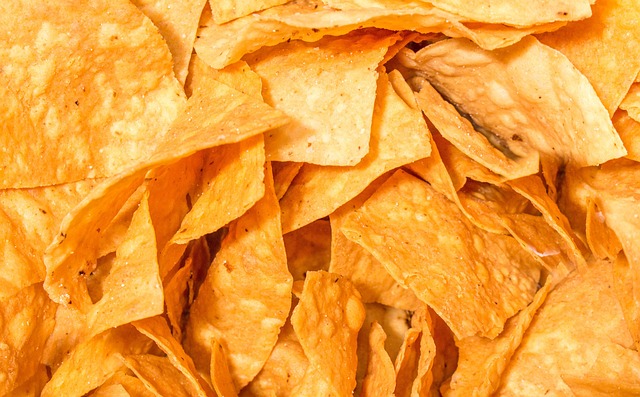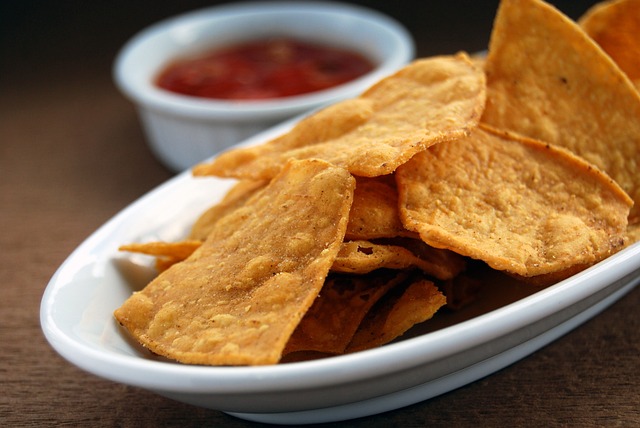Unflavored tortilla chips on the U.S.-Mexico border are a testament to authentic Mexican culinary heritage, crafted with traditional corn processing methods and deep-frying techniques. Their versatility allows for pairings with classic dips or community dishes, while their golden-brown crispness and subtle corn flavor evoke ancestral flavors. Handcrafted in vibrant markets, these chips serve as cultural touchstones, fostering exchange and leaving indelible impressions through their simple yet profoundly satisfying taste.
Discover the enchanting world of Mexican market chips, where unflavored tortilla chips reign supreme as a local favorite. This article delves into the art, flavors, and cultural significance of these homemade treats, particularly focusing on their dominance in border markets. From traditional production methods to modern techniques, we explore why authentic, unflavored tortilla chips have become an integral part of both local life and tourism experiences on The Border.
- The Art of Mexican Market Chips: Unflavored Tortilla Chips as a Local Favorite
- Authentic Flavor Profiles: Why Unflavored Chips Dominate Border Markets
- Production Methods: Traditional vs Modern Techniques for Making Homemade Tortilla Chips
- Cultural Significance and Tourism: The Appeal of Border Markets' Unflavored Tortilla Chips
The Art of Mexican Market Chips: Unflavored Tortilla Chips as a Local Favorite

In Mexican markets, a simple yet beloved treat stands out for its unadorned nature—unflavored tortilla chips. These chips, crafted with time-honored techniques on the border and beyond, are more than just a snack; they’re a culinary testament to the region’s rich heritage. Local vendors meticulously prepare them by hand, ensuring each chip achieves that perfect golden-brown crispness.
On The Border, these unflavored tortilla chips have become a staple, attracting both locals and tourists alike. Their versatility allows for diverse pairings—from simple dips like salsa or guacamole to more elaborate dishes. This local favorite showcases the essence of Mexican cuisine: real, uncomplicated flavors that resonate with the heart of the community.
Authentic Flavor Profiles: Why Unflavored Chips Dominate Border Markets

In border markets along the U.S.-Mexico divide, unflavored tortilla chips reign supreme. This preference for plain chips isn’t merely about simplicity; it’s deeply rooted in authentic flavor profiles that define Mexican cuisine. The diverse array of regional cuisines across Mexico offers a wealth of complex and subtle tastes, from smoky chipotles to zesty lime, which are best appreciated without the distraction of artificial flavors or seasonings.
Unflavored tortilla chips allow for a more nuanced dining experience where the quality of the corn, the traditional stone-grinding techniques, and the craftsmanship of each batch shine through. Their versatility makes them a staple in households and street food stalls alike, where they serve as a canvas for dipping into homemade salsas, guacamoles, or simply for savoring their crisp texture and subtle corny taste. This tradition of unadulterated chips reflects the borderland’s rich culinary heritage and its deep connection to authentic Mexican flavors.
Production Methods: Traditional vs Modern Techniques for Making Homemade Tortilla Chips

In the traditional realm of Mexican cuisine, making homemade tortilla chips is an art that has been perfected over centuries. The most authentic method involves hand-pressing corn tortillas into thin, crispy sheets using a heavy wooden tool known as a metate. These chips are then fried in small batches, resulting in a delicate, hand-crafted texture and a taste that harkens back to ancestral culinary practices. This time-honored technique produces unflavored tortilla chips on the border, where each chip carries the essence of pure corn.
Modern production techniques have brought efficiency to the process while preserving the essential qualities of these chips. Today, many makers use specialized machinery for pressing and cutting tortillas into uniform shapes, ensuring consistency in texture and taste across batches. Advanced frying equipment also allows for precise temperature control, resulting in perfectly crispy chips with a longer shelf life. Despite these advancements, the core focus on quality remains unchanged, delivering the same beloved unflavored tortilla chips enjoyed by folks on the border and beyond.
Cultural Significance and Tourism: The Appeal of Border Markets' Unflavored Tortilla Chips

The unflavored tortilla chips on the US-Mexico border hold a unique cultural significance, appealing to both locals and tourists alike. These markets, brimming with authentic Mexican flavors, offer a sensory experience that goes beyond taste. The simple act of hand-making chips from fresh corn tortillas is an art passed down through generations, symbolizing the region’s rich culinary heritage. Tourists often find themselves drawn to these markets, captivated by the vibrant atmosphere and the opportunity to witness traditional food preparation methods.
For many visitors, the unflavored tortilla chips represent a genuine connection to Mexican culture. The absence of artificial flavors allows the natural corn flavor to shine, creating a taste profile that is both familiar and comforting to locals while offering a unique culinary experience for foreigners. These markets have become iconic landmarks on the border, fostering cultural exchange and leaving an indelible impression on those who indulge in their simple yet delicious offerings.
The unflavored tortilla chips found in Mexican border markets represent a culinary tradition that transcends borders. These simple, handcrafted snacks embody the essence of local flavor and cultural heritage, attracting both locals and tourists alike. As we’ve explored, the art of chip-making, from traditional to modern methods, showcases the enduring appeal of authentic, unadulterated taste. The popularity of these chips speaks volumes about the human connection to food that transcends language and culture, making them a must-try experience for anyone fortunate enough to visit or call the border region home.
